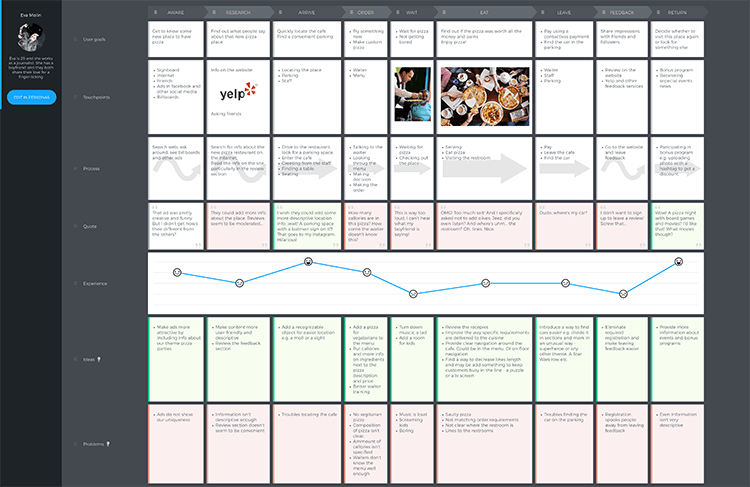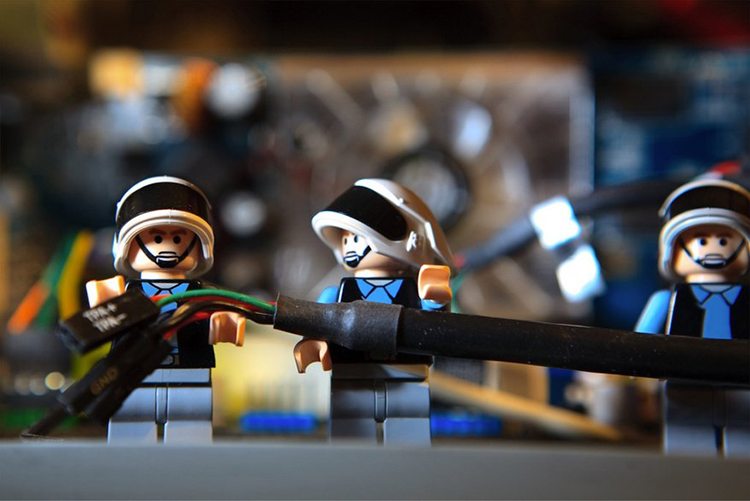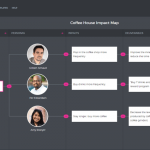They say the early bird catches the worm. At UXPressia we say the earlier you start designing good UX, the more people you retain. And the higher conversion you get. The more mores you’ll have. Even when your product is nothing more than a concept in your head. But how can you design UX for a non-existing-yet product or service? And what’s more important: can CJM help in this situation? Spoiler alert: yes, it can.
Using CJM to design future products
You may think that customer journey mapping only works when you design UX for existing products, right? No. Using CJM for fixing flaws in user experience is good, but what can be better than avoiding these flaws from the very beginning? Nothing.
When you develop your product side by side with customer journey mapping, you prevent many issues from ever appearing in the future. I don’t have so many fingers to enumerate all the wins you get in case you start developing your product with CJM. Here’s a few:
- Bringing seamless customer experience to your service/product. Designing effective and smooth service delivery across many channels is a pain. This pain can be sedated greatly by designing CX side by side with your service. Using CJM to filter every feature through the user experience sieve lets you build impeccable customer journeys. The kind of journey people want to take again and again.
- Improved brand perception. Each investment you make into improving user experience reduces the gap between your brand and people. Should I mention that the sooner you become obsessed with CX, the fewer gaps you’ll have?
- Reduced costs. If you design user experience well from the ground up, there’ll be fewer resource leaks later. Use CJM to design products and you’ll save a lot of time and even more money. It’s simple as that.
- A better understanding of customers among departments. When you develop your product for a while with no or little thought about UX, that’s where misunderstanding between the front and back office starts to grow. People cannot see how exactly they contribute to the overall UX. As a result, user experience becomes something that your customers do not want to experience. Inviting folks from all departments to CJM workshops fixes that. And the sooner that happens the better.
- Less corporate silos. Correct me if I’m wrong, but it is way easier to eliminate silos at the very root than to deal with it when it’s gotten into your company.
- Better marketing strategy. With CJM on board you’ll know your customers better, thus you’ll know how to engage them long before the first product prototype.
As you can see, there’s a whole load of reasons to use customer journey mapping from the very beginning. And all of them remain actual at every stage of development.
CX Stages

Picture is clickable
Speaking of stages, just like product development, user experience has its stages too. And if you want to bring that seamless CX into your business, you’ll first need to break the UX path into those stages. And stages into touchpoints. Improving each step and linking between them will lead to a smooth overall customer experience. Take a pizza restaurant as an example. Everyone loves pizza and so does Eva.
- Before interacting with your product/service. At this stage, Eva doesn’t know that your restaurant exists. She goes to her favorite search engine and finds your website. How would you make her feel like she knows you all along? By making marketing and content more personal. Create personas to get the idea of what your users may look like. Asking what Eva wants and how she wants to get it will give you clues about how you can make marketing closer to people like Eva.
- During interaction. Eva has spent some time on your website and is ready to order. She goes to your restaurant, looks for a parking spot. Talks to the waiter and waits for her pizza. Your goal here is to make Eva as happy as you can. Use journey maps to design products that match Eva's expectations perfectly.
- After the purchase and use. Hey, you’re not done once Eva ate pizza and paid for it! There’s still a huge room for improvement. How will you reward her? What bonus programs will Eva truly love? How do you handle feedback from her? In fact, Eva's path shouldn't at all. Instead, it should become a circle. CJM will tell you what you need to do to make Eva pop in every time she wants to have some pizza time.
Troubleshooting

Photo http://cloudreviewhq.com/
By this moment, you probably can’t wait to apply CJM to your product or service development. Be careful as there will be obstacles that you want to get over. With all the benefits described above, using CJM at the earliest stages of development is extremely tricky. But what can be better than a good challenge?
The greatest challenge you’ll have to face will be the lack of info. Customer data is critical for journey mapping. Unfortunately, info is a treasure that’s nowhere to be found when you’re just starting off. Fortunately, there are always workarounds for those who do not tolerate defeat.
- Make guesses based on the product/service that you’ll be creating. You surely have enough expertise about the thing you’re working on to come up with sound ideas.
- Unless you’re a pioneer with zero competition on the market, you can check out what’s going on at your competitors’ labs.
- Observe customers in their natural habitat. Find what particular groups of people do in certain contexts. Define the pains they have to face and their expectations. What are they used to? Do they really have the need that you’re trying to fulfill? Lots of work can be saved by finding answers to these questions.
Using customer journey mapping at the earliest stages of product development does much more than killing a few birds with one stone. As a matter of fact, CJM has an enormous lethal area allowing you to disintegrate all the birds while they’re still on the ground. CJM’s got all that, big time! And we encourage you to create journeys because the sooner you start, the more troubles you’ll prevent from happening. To help your team build great maps, we offer a great variety of online templates for all sorts of customer journey maps. Don’t shelve it, visit us as uxpressia.com and start mapping now!





